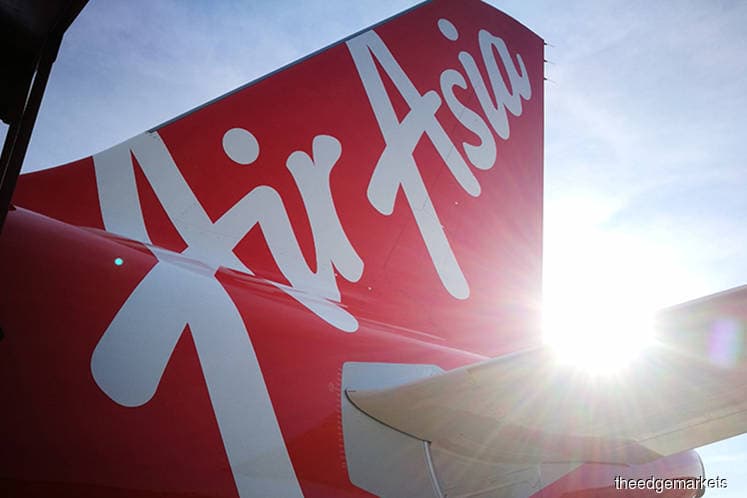
KUALA LUMPUR (July 23): AirAsia Group Bhd’s passenger volume for its consolidated aircraft operating certificate (AOC), comprising Malaysia, Indonesia and the Philippines, rose 18% to 12.84 million in the second quarter of this year (2Q19), from 10.88 million a year earlier.
The number of passengers carried as a percentage of capacity rose 19% to 15.09 million, from 12.72 million, the low-cost carrier said in a statement.
The load factor was 85% compared with 86% in 2Q18, while the available seat kilometres (ASK) grew 17% year-on- year (y-o-y), as the group continued to expand its network through strategic addition of new routes and increased frequencies to domestic and international destinations.
In Malaysia, AirAsia’s capacity grew 13% y-o-y to 10.41 million in 2Q19, resulting in a 11% increase to 8.8 million passengers carried in the quarter.
“The growth rate exceeded that of the industry average, as AirAsia Malaysia continued to increase its market dominance, while load factor remained strong at 84%,” AirAsia said.
AirAsia Indonesia’s capacity rose 56% to 2.23 million in 2Q19, following the transfer of eight aircraft in 4Q18, while it carried 1.82 million passengers, 58% higher compared with 2Q18.
“Despite the increased capacity, strong demand from seasonality of Aidilfitri and school holidays has positively contributed to a load factor of 82%, up 1 percentage point y-o-y,” AirAsia said.
In the same quarter, AirAsia Philippines saw an 18% increase in capacity on increased frequencies of domestic routes, while its passengers volume grew 22% y-o-y.
The load factor in the Philippines also surged to 91% or 4 percentage points (ppts) higher than the previous year, despite the aggressive capacity addition.
AirAsia Thailand’s capacity grew 8% to 6.75 million in 2Q19, which was backed by a 5% y-o-y growth in passengers carried to 5.58 million, while its ASK grew 12% on capacity for routes to China, Indochina and India.
Load factor, on the other hand, was slightly lower at 83%, versus 85% in 2Q18, due to the off-peak tourism season, a stronger baht and weaker-than-expected tourist arrivals, especially from China.
Nonetheless, Thai AirAsia continued to exceed visitor growth expectations and gained market share in the quarter reported, the group said.
Meanwhile, AirAsia India saw its capacity rise 21% y-o-y, which was in line with the company’s strategy to grow its domestic market share, while total passengers carried was up 25%, recording a strong load factor of 90% in the quarter reported.
“AirAsia India took delivery of its 21st aircraft during the quarter, while approvals to commence international flights into the group’s destinations are pending,” AirAsia said.
AirAsia Japan also recorded strong operational improvements, with a 79% increase in passengers carried to 102,815, while capacity expanded 81% y-o-y to 131,712. Load factor held steady at 78%, the group said.
Meanwhile, AirAsia’s long-haul affiliate AirAsia X Bhd flew 7% less passengers in 2Q19 at 1.46 million, compared with 1.57 million in 2Q18.
Capacity dropped 6% to 1.81 million from 1.92 million, while load factor eased to 80% from 81%, AirAsia X said in a statement.
“In this historically lean quarter, the company’s ASK was reduced by 6% y-o-y to 8.44 million (from 8.96 million), on the back of seasonal capacity management and current operation of shorter stage routes, as compared to prior year,” the airline said.
Associate AirAsia X Thailand carried a total of 541,509 passengers in 2Q19, an increase of 12% y-o-y .
Shares of AirAsia Group Bhd closed two sen or 0.69% lower at RM2.87 today, valuing the company at RM9.59 billion.
AirAsia X Bhd’s share price closed unchanged at 22 sen, giving the group a market capitalisation of RM933.33 million.